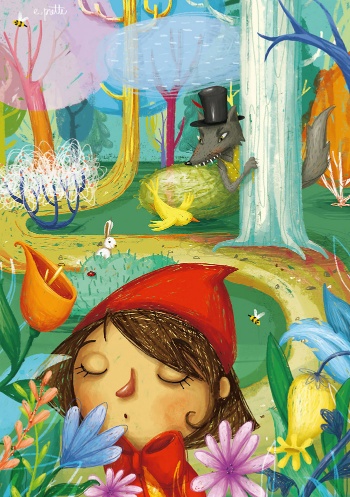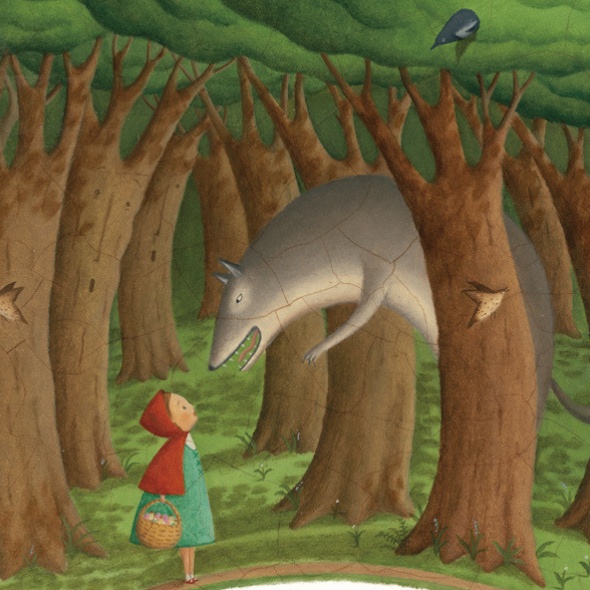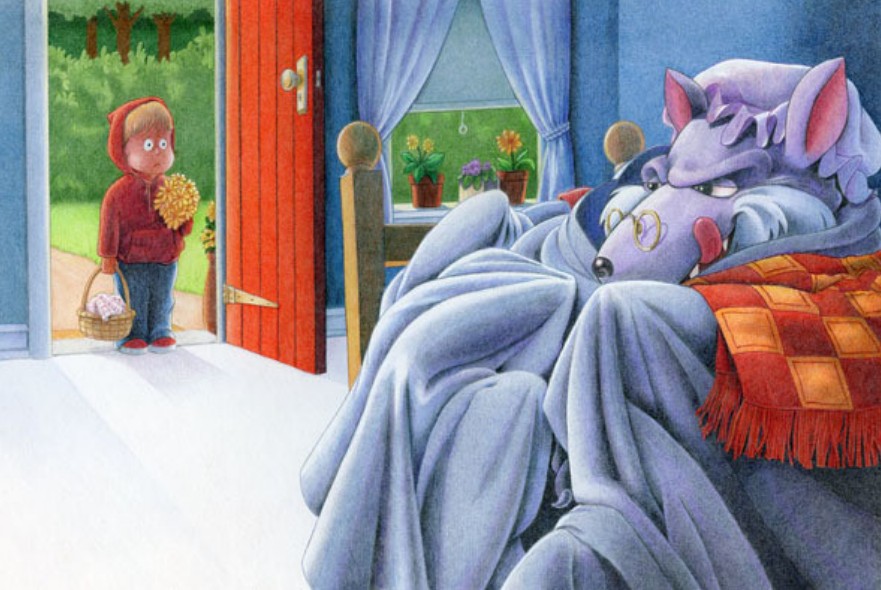Classic fairy tales are timeless and there are many reasons for that. But they are also quite macabre and scary… Are the classic fairy tales good for children? This question we will try to answer in our new article dedicated to fairy tales and their scary dimension.

Take Little Red Riding Hood for example. A little girl, at the urging of his mom, starts going on her own to her grandmother’s house through the forest. Her mom has explicitly told her to go straight to her grandmother’s house. On the way, Little Red Riding Hood meets the the Big Bad Wolf and talks to him. He, after learning where her grandmother’s house is, tries to take her out of her way, distracting her to the beautiful flowers of the forest. While Little Red Riding Hood is picking flowers, the wolf arrives at her grandmother’s house and devours her. Then he gets dressed and waits for the little girl to come. When Little Red Riding Hood finds the wolf in her grandmother’s place, she worries and makes remarks such as “Grandma, what big ears you have” which end in the fatal statement “Grandma, what a big mouth you have” and the scary answer-revelation “To eat you better”. There the wolf rushes and eats Little Red Riding Hood. He lies down to digest and with his snoring catches the attention of the passing hunter. The hunter suspects what may have happened and so grabs a pair of scissors and begins to cut the wolf’s belly. This saves the grandmother and Little Red Riding Hood, who come out of the womb alive. To punish the wolf they fill the belly with stones and the wolf dies. A macabre end to a scary story.

Tales written by writers such as the Grimm brothers and Hans Christian Anderson are full of magical elements. Dwarves, dragons, elves, talking animals, witches, princes and princesses make a universe that children love. We learned that classic fairy tales were originally oral narrations aimed at transmitting moral messages to children. Little Red Riding Hood teaches us not to talk to strangers, the three little pigs show us that we need to think a little more, Cinderella conveys the value of patience…
If you want children to be intelligent, read them fairy tales. If you want them to be more intelligent, read them more fairy tales.
Albert Einstein (source)

According to Mary Wakefield, considering fairy tales inappropriate for children shows that we understand neither children nor fairy tale stories. Fairy tales give a name to children’s fears, something very beneficial for their psychology. We read that in 1976 child psychologist Bruno Bettelheim wrote in a book that the scary elements of fairy tales help children with their emotional problems. Fairy tales offer children an unreal, symbolic space in which they can safely face and overcome their anxieties.

Elsewhere we read that children go through developmental stages in which they develop intense fears that they cannot express. The fairy tales offer children a form and a name to project their fears. In fairy tales the characters are good or bad, they are archetypes that speak in simple and universal language to children. Archetypes for Jung are symbols that exist in the collective unconscious and help us get along with the world. Archetypes and symbolism in fairy tales are universal themes with which most people can identify.

Mary Wakefield argues that children can understand that the purpose of fairy tales is not to intimidate, but to protect. Stories are designed to warn and teach. Thus, in Little Red Riding Hood the goal is for the child to see the consequences of disobeying her mother’s orders and to be taught not to trust strangers. Even if she has good intentions, disobedience brings negative results, such as when Little Red Riding Hood disobeyed her mom’s order to go straight to her grandmother’s house to pick flowers, an innocent act whose dramatic consequence was to her grandmother and Little Red Riding Hood get eaten by the wolf. According to anthropologist Jamie Tehrani, what we find interesting about Little Red Riding Hood’s story is the survival information it contains.

A survey by channel Watch, however, showed that parents abandon classic fairy tales because they find them too scary for children. A parent says parents can understand the innocent nature of fairy tales, but a five-year-old can take things literally. On the contrary, Professor Zipes considers it hypocritical to protect children from the dark side of fairy tales. The honest thing is to tell children that violence exists and that the world is full of struggles and conflicts.

We think that when we read classic fairy tales to children, it is important to open a dialogue. Talk to the children about the issues that arise, in order to show them that the fairy tale has a symbolic and not a literal dimension. We can make different plots with the children in which things are turned upside down. In this way, children will practice their imagination and critical thinking. If, of course, a fairy tale scares children a lot, we can avoid it, since our purpose is not to create nightmares for them. It is up to parents and teachers to approach fairy tales in a creative and child-friendly way.
Read first each of our new articles!
Find us on our social media:
- Instagram: @eatdessertfirstgreece
- Facebook profile: Giorgos Eliza Vlachakis
- Facebook page: eatdessertfirstgreece
- Twitter: @eatdessert1stGr
- Pinterest: eatdessert1stGr
- WordPress: Eat Dessert First Greece
- LinkedIn: Eliza Neofytou
- Reddit: eatdessertfirstgr
Follow us by filling in your email in the field at the bottom of our website, so that every new article will be emailed to you as soon as it is released. Do not forget to confirm your registration, in the email that will come to you! 🤗 Those of you who are wordpress bloggers, just click follow.


Thanks for this interesting discussion. Some good points raised.
LikeLiked by 2 people
Thank you so much for your kind words!
LikeLiked by 1 person
I can’t imagine a world without these classic tales.
Thank you for this insightful post.
LikeLiked by 1 person
We totally agree! Thank you very for your kind comment !
LikeLiked by 1 person